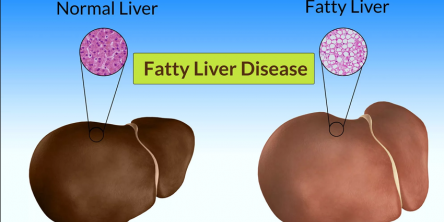How to Use a Stethoscope

How many times have you seen a little kid listening to his or her heartbeat with a stethoscope? Using a stethoscope may seem simple enough, but there are proper steps to take in order to use it properly and to its fullest potential. Read on, and learn how to properly use a stethoscope.
First: Find a quiet space
In its most basic form, a stethoscope is a listening device. To use it properly, get rid of as much outside noise as possible. Find a quiet spot where the background noise does not interfere with your hearing.
Second: Insert the earpieces
After you have found a quiet spot, put the earpieces into each ear. Take care of where the chest piece is located because you do not want to knock it against anything unless you want that small thud amplified directly into your ears.
Third: Place the chest piece on the patient
Now you are ready to start listening. Place the chest piece directly onto the person's skin. You do not want to use it over clothing as the rustling of the fabric severely dampens the sound of the breathing pattern or heartbeat. If your stethoscope is cold, it is a good idea to warm it up with your hands or breathe on it before placing it on the skin.
Fourth: Listen
Now that you have placed the chest piece on your patient, listen to his or her heartbeat and breath. Keep in mind that the heartbeat sounds different in different areas of the body so check more than one location.
Before you go to the doctor, you might wonder, what is a stethoscope used for? Although this common medical device is over 200 years old, it is as important as ever.
Listening to those lungs
A good doctor is attuned to his patient, inside and out. The stethoscope helps the doctor to listen to the internal bodily processes of a patient, such as the respiratory and circulatory systems. The stethoscope may even pick up the sounds of the intestines. It is up to the trained doctor to interpret the sounds coming from the stethoscope; as with any technology, the implement is only as good as the person using it.
The different types and uses of stethoscopes
There are several different types of stethoscopes, and each has different features and uses. The high-tech fetal stethoscope is used to hear the heartbeat of a fetus. Recording stethoscopes are used for research purposes. The common stethoscope comes in both traditional acoustic and electronic varieties. Acoustic stethoscopes are the most common type, but their sound output is low. For this reason, electronic stethoscopes are also produced in order to better hear the sonic output. High-volume electronic stethoscopes are also more suitable for remote diagnosis, which is more and more common these days.
When you are entering the doctor's office for your annual check-up, you know that you can anticipate the familiar stethoscope. Now, you probably have a better idea why this device is used. When properly utilized by a competent doctor, a stethoscope is an essential tool for your health.
Your Expertise
Before you go looking for the best stethoscope, take into consideration your field and specialty. Different specialties sometimes need diverse characteristics in stethoscopes. For example, a doctor working in obstetrics will need a different stethoscope from the one who works as a cardiologist. Someone in obstetric will need to have an advanced stethoscope that can convey sounds both from the heart of the mother as well as in the fetus.
One of the best ways to choose the best stethoscope is to first narrow down on the kind you want as per your specialty. Once you are clear with that, you can look around for some within your budget. Go through reviews of stethoscopes that are available in the market as a general preview. Moreover, discuss it with your colleagues as well as seniors and make your decision based on their feedback.
It is important for the physician to use the best stethoscope so as to give the best diagnosis. Using outdated or a very old stethoscope means you are being casual about the life of your patient and are not serious about your profession. So always try to find the best stethoscope.
For more reviews for nurses stethoscope on our recommended stethoscopes, we highly recommend to also check out Amazon’s reviews. Their Individual reviews from their customers who have bought these stethoscopes and used it makes for great extra research.
Similar Articles
An electroencephalogram (EEG) is a test that measures the electrical activity in the brain. Healthcare experts utilize it to evaluate and comprehend neurological illnesses, sleep disorders, and brain damage.
So, your back decided to stage a mutiny and gift you with a herniated disc. Lovely. Now what? If you’re imagining a future filled with endless discomfort and groaning every time you get out of bed, don’t fret. There are plenty of ways to tackle a herniated disc and get back to living your best, pain-free life.
Back pain – it’s not just a matter of “I lifted a heavy box, and now my back hurts.” It’s often the result of a complex dance between our minds and bodies, with stress, anxiety, and emotions playing lead roles. If you’ve ever woken up with a stiff back after a tough week or felt your spine twinge just from reading a long email chain, you’re not alone.
Chronic pain is a medical problem that affects many people around the world. Unlike acute pain, which is a short-term response of the body to tissue damage, chronic pain lasts longer, often without obvious physical damage. It can last from several months to several years, and its consequences can affect all aspects of a person's life
When was the last time you gave your veins some love? These hardworking highways of blood don’t ask for much—just a little support and, occasionally, professional attention when they’re not performing at their peak.
These small plastic containers are a household staple, but disposing of them incorrectly only adds to the growing waste issue. Learning to eco-dispose pill bottles reduces your footprint and shows love and respect to the planet and future generations.
We often experience small discomforts or symptoms that seem insignificant, like headaches, fatigue, or brittle nails. Many times, we brush them off, thinking they’ll go away on their own. However, these minor issues might be your body’s way of telling you that something more serious is going on.
According to the World Health Organization (WHO), half to three-quarters of adult persons globally experienced a headache in the past year. Unfortunately, tension headaches are one of the most prevalent symptoms you can have. Furthermore, some tension headaches resemble migraine headaches, making matters worse.
The review of Yakrit Plihantak Churna is going to be amazing. You will know the facts, does it works along its benefits. The liver is the main engine of the body. It is the second largest gland in the body.









